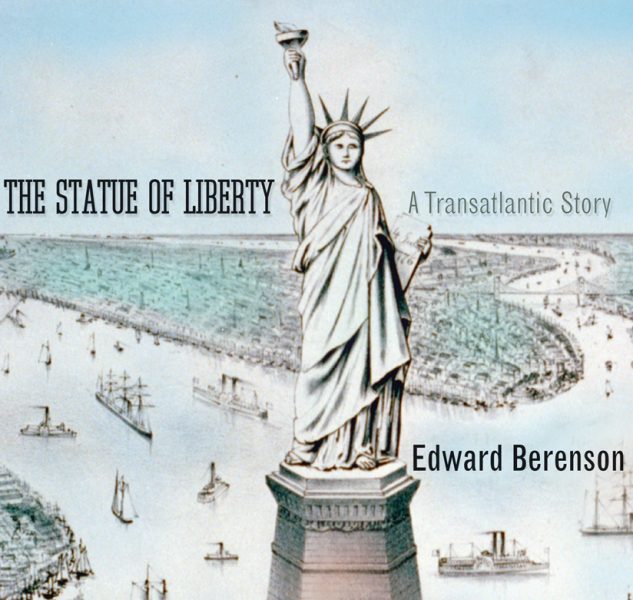The Statue of Liberty: Changes of the Eternal Symbol
The Statue of Liberty may be the most recognized symbol in all of American culture. Its form dominates pop culture, portrayed in high profile advertising campaigns and highlighted on tourists’ kitschy tee shirts. But despite the universality of its image, what the icon actually represents remains open to interpretation, changing over time and through cultural barriers. Edward Berenson explores these identities in his addition to the Icons of America series, The Statue of Liberty: A Transatlantic Story.
For many, the first association is the one taught in schools, established in movies, reinforced in traditions – The Statue of Liberty as the gateway to America, the very first welcoming sight of those “huddled masses yearning to breathe free.” Berenson engages with this idea in his text, recreating the magic of those weary travelers:
For immigrants young and old, the sight of the Statue of Liberty glistening in the harbor evoked feelings of reverence and awe, and to many the green goddess seemed almost divine. “Slowly the ship glides into the harbor,” wrote Edward Steiner, “and when it passes under the shadow of the Statue of Liberty, the silence is broken, and a thousand hands are outstretched in a greeting to this new divinity to whose keeping they now entrust themselves. ‘Oh Papa,’ cried one young girl, ‘the goddess has waded into the water to meet us!’”
 Immigration and America’s coveted status as “Melting Pot” have always been entangled with The Statue of Liberty. The legacy of Ellis Island remains relevant in the American collective imagination because so many Americans owe their citizenship to brave ancestors who passed through the checkpoint – who first caught a glimpse of The Statue of Liberty.
Immigration and America’s coveted status as “Melting Pot” have always been entangled with The Statue of Liberty. The legacy of Ellis Island remains relevant in the American collective imagination because so many Americans owe their citizenship to brave ancestors who passed through the checkpoint – who first caught a glimpse of The Statue of Liberty.
And yet, Berenson makes it very clear that this was not the full story. At the same time, politicians and writers used the image of the statue to relate the hostility of many Americans towards these foreign newcomers. In fact, the horrors of waiting and terrible conditions of Ellis Island created a strange purgatory for immigrants, off the boat but not yet welcome. This, too, is the legacy of Lady Liberty, although this xenophobia is not embraced in popular history.
Then with the tragedy of September 11, the Statue of Liberty stepped up to fill a new role. This day marked the last of the school field trips and easy visits up the spine of Lady Liberty, but from that day forward, the Statue served as a symbol of the strength and tenacity of New York City, of the United States of America. This connection requires no explanation, an easy one-two step in the minds of a proud but mourning people. In just one afternoon, the statue took on a different meaning of the word “liberty.”
But Berenson does more than wax poetic about the American Dream. He hypothesizes that the statue’s prominent location, abstract design, and sheer enormity allow it to fill multiple roles. While other monuments are dedicated to certain events or commemorate specific wars, The Statue of Liberty embodies broader concepts of freedom and patriotism. It can be used to reflect on the horrors of slavery, to commemorate fallen soldiers, and to embrace the future of America.
Berenson also thoroughly chronicles the complex history of the statue, touching on imitations, from the events leading up to the gift from the French, through the difficult process of constructing and unveiling the statue, to where it currently stands today: under renovation and scheduled to reopen to the public in late 2012. But even if the original is currently barred from visitors, the iconic Statue of Liberty and the countless ideals she represents remain as accessible as ever.


























